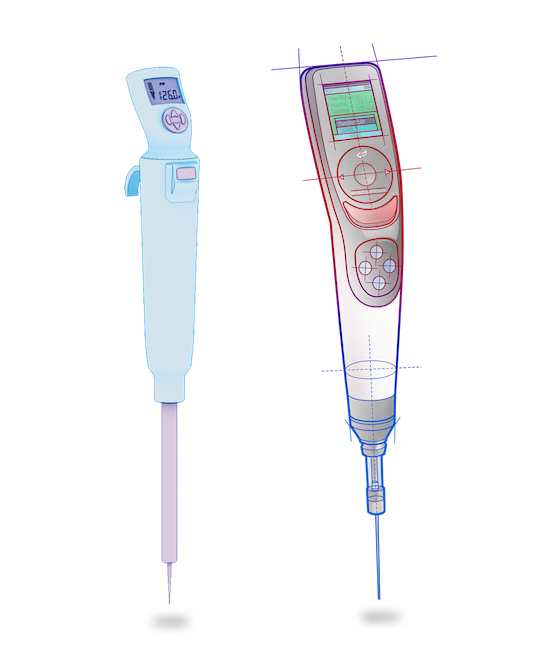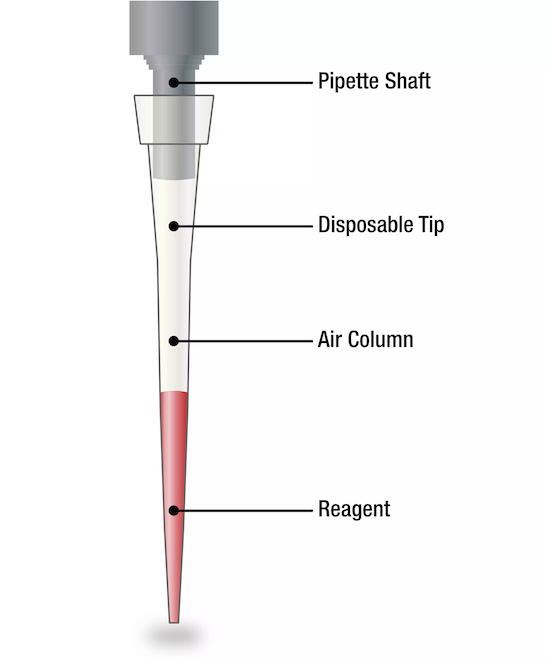For medical lab applications, motor selection is integral to an electronic pipette’s accuracy and precision.
Valentin Raschke
Application Engineer
Portescap
Laboratory automation has always been a great fit for linear motion. Within certain laboratory devices, precision is required for moving samples into position, adding reagents, and withdrawing samples. Advancements in the linear force and speed capabilities of stepper linear actuators let device manufacturers increase their throughput with these actuators without sacrificing quality.
Life science researchers rely on pipettes as a dependable means to measure and dispense liquids to a specific volume. Pipettes are typically the first step in many lab processes, so they must perform accurately and reliably to ensure that researchers can successfully reproduce the outcome of their experiments. Since the pandemic began in 2020, pipettes have become an even more vital laboratory tool, helping COVID-19 researchers prepare lab samples to detect pathogens using techniques like real-time PCR (polymerase chain reaction).
As pipettes take on this critical role, the choice of component—such as motors—for a design is just as critical.

How pipettes work
Laboratories use different types of pipettes, depending on the scale of the lab and the volume of liquid that must be dispensed. The four most common pipette types are air displacement, positive displacement, volumetric, and graduated.
Inside an air displacement pipette, for example, a piston creates positive or negative air pressure that allows a user to take in or eject a liquid sample using a disposable tip. Meanwhile, the tip’s air column separates the liquid from the non-disposable part of the pipette. Pipettes can either be designed to allow the operator to trigger the movement of the piston using a thumb button, or a motor can move the piston when an operator presses a button.
Used in molecular biology and analytical chemistry as well as in many medical tests, electronic pipettes allow for accurate and repeatable delivery of samples and reagents. These electronic units have become increasingly common among researchers compared to manual types. When an operator uses a manual pipette over a long period of time, the pipette may become uncomfortable or even cause injuries. For example, the force required to dispense the liquid and eject the pipette tip, combined with repetitive motion for hours at a time, can increase the risk of repetitive strain injuries (RSI) in a user’s thumbs, elbows, wrists or shoulders.
By contrast, electronic or motorized pipettes offer better ergonomics, as well as a more efficient way to increase sample throughput with precision and accuracy. Instead of the traditional thumb-controlled pipetting button and manual volume adjustment, electronic pipettes have a digital interface that allows users to adjust the volume. The motorized piston is used for aspiration and dispensing.

Precision and accuracy
Because pipetting is typically the first step of a multi-step process, any inaccuracy or imperfection when measuring such small amounts of liquid will carry through the process and ultimately impact the total accuracy and precision of the entire experiment.
Users can achieve precision when the pipette dispenses the same volume multiple times, while accuracy occurs when the pipette dispenses the exact amount of the targeted volume without any error. While it’s possible to achieve one without the other, most industries that use pipettes require both precision and accuracy—especially because both are needed to reproduce the outcome of experiments.
Comparing dc motors and stepper motors
The heart of any electronic pipette is the motor. Not only does the motor greatly influence precision and accuracy, but it also affects other important factors like envelope size, power and weight. Pipette designers can primarily choose either dc motor or stepper linear actuators, and both have strengths and weaknesses.
First, dc motors are simple electronic machines that rotate when dc power is applied. They do not require complex electronics to run the motor. However, because linear motion is required for the electronic pipette, a dc motor will also need an additional lead screw and gearing system to convert rotational movement to linear movement and provide the required force. The dc motor will also need to incorporate a feedback mechanism, such as an optical sensor or encoder, to control the linear piston position. Depending on the design, it may also be necessary to add a braking system to improve the accuracy to account for the rotor’s high inertia. While a dc motor may enhance the pipette system’s overall precision and accuracy, it can be an expensive option.
The other option is to use a stepper motor-based system. Stepper linear actuators are characterized by their ease of integration, high performance and low cost. They consist of a can stack stepper motor with a threaded rotor and integrated lead screw that provides direct linear motion in a small package.

Unlike the dc motor, the stepper linear actuator lead screw moves up and down in discrete step increments when electrical pulses are applied. It can be accurately controlled via an open-loop system, eliminating the need for expensive feedback devices or braking systems for positioning. Typically, high-resolution positioning can be achieved with a small step angle and a choice of lead screw pitches. To enhance positioning, the stepper linear actuator can be driven in micro-stepping mode. However, to ensure the highest possible accuracy and avoid dispensing inaccuracies, the stepper motor should be sized properly because an improperly sized motor can lose steps and contribute to dispensing inaccuracies…
Motorized pipette designers should also follow these important best practices during motor selection:
- Keep a minimum 50 percent safety factor from the speed/force curve.
- Avoid low-frequency resonance points during operation.
- Avoid back-driving, sudden movements and external load changes.
The dispensing accuracy of air displacement pipettes comes down to how well the internal piston is controlled. Electronic pipettes powered by dc or stepper motors are designed to overcome the human factors associated with manual pipettes. While both motor types have benefits, stepper linear motors offer the additional advantage of open loop control. Without the additional control electronics needed for DC motors, a properly sized stepper motor provides pipette designers the reliability they need to ensure precise and accurate dispensing.
Portescap
www.portescap.com
Filed Under: Motion Control Tips




